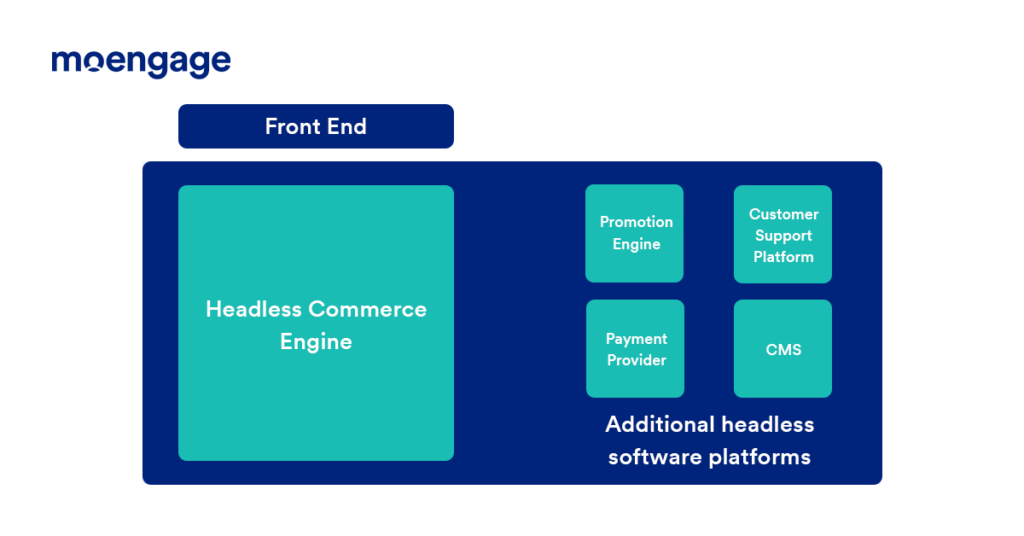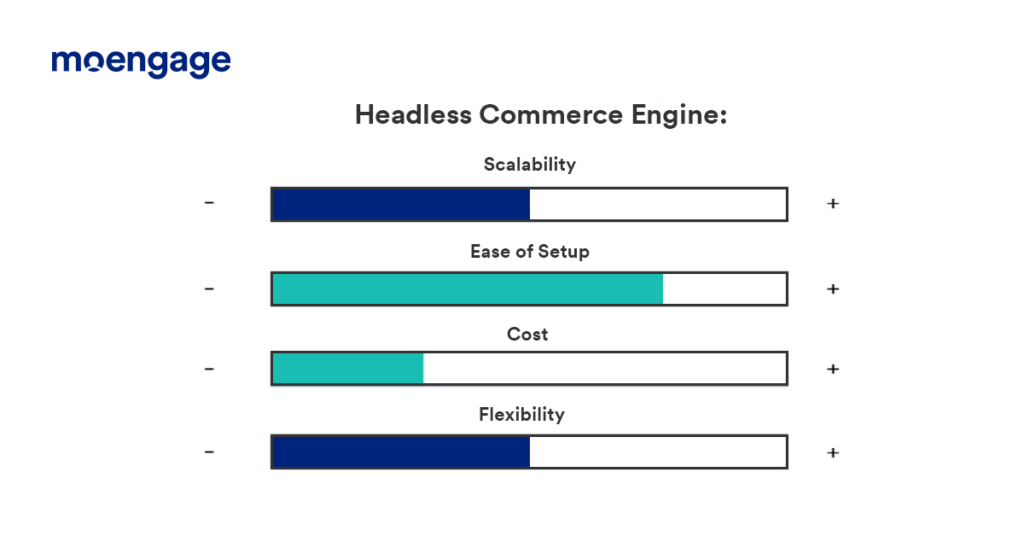How Can Shopping Brands Build A Headless Commerce Stack From Scratch

Reading Time: 4 minutes
The number of consumers shopping online is now greater than ever. And the way they shop online has changed, with 73% of consumers now using multiple channels to shop. To keep up with this changing shopping behavior, many E-commerce and Retail brands have turned to headless commerce because it offers a wide variety of benefits over conventional E-commerce software platforms.
What is Headless Commerce?Headless Commerce is a software architecture that offers a full range of back-end software functions without a front-end delivery layer. The term “Headless Commerce” is used to describe a specific software architecture used in E-commerce and online retail. |
Headless Commerce differs from conventional E-commerce software because it comprises separate systems that work together in one backend stack. While each piece of software can function independently, when connected together via API they offer comprehensive solutions for any purpose.
What are the different components of a Headless Commerce stack?

Here you can see a software blend containing a core headless engine and multiple specialized microservices like a personalized promotion engine. Each component powers different parts of the online shopping experience. In this stack, businesses are free to add additional microservices as they wish.
By comparison, equivalent monolithic E-commerce platforms tend to have much more limited functionality. They’re also hard to upgrade and less scalable.
Why is Headless Commerce better for customers?
When you take a look at a typical Headless Commerce stack alongside a monolithic system, it’s easy to see why it has become the favored option.
Most consumers are now at least partially ‘omnivorous’ in the shopping channels they frequent. Many switch readily between mobile, web, and in-store channels during a single buying journey.
This means that consumers have come to expect a seamless shopping experience across multiple touchpoints – whether that’s a website, mobile app, or any other digital medium. It’s part of a wider surge in online consumer expectations that has left the old E-commerce model slightly out of touch.
Providing a seamless experience across multiple different channels is something conventional monolithic E-commerce software can struggle with. That’s where the headless model comes in. It provides the flexibility, scalability, and general adaptability that businesses need to serve their customers online.
Headless Commerce offers a host of compelling advantages over monolithic systems. Headless Commerce stacks allow businesses to:
- Build solutions around their own specific requirements, rather than having to compromise because of software limitations
- Prepare for unforeseen challenges or changes in their business strategy by offering unrivaled flexibility
- Streamline their workflows with integrations that allow them to make changes across their entire software stack simultaneously
- Create seamless experiences, no matter which channels customers use to visit their site
Advantages of going headless
Perhaps the biggest benefit of the Headless Commerce approach is the fact that stacks can be built and customized for any business’s needs.
Whether you are a small-to-mid-sized E-commerce retailer looking to build your presence in foreign markets, or an established, specialist online marketplace looking to improve your customer experience – Headless Commerce allows you to build a solution that fits your individual needs.
The top priority for many businesses is flexibility. It gives them a wide range of options for their current setup, and a greater range of options as they grow. As a result, many headless microservices place flexibility at the center of their software philosophy.
|
E-commerce has to be future-proof, but it isn’t about blindly guessing what happens next and preparing for it. It’s about being always prepared for whatever can happen instead. That means flexibility. – Snippet taken from Talon.One’s ebook, “Building a Headless Commerce Stack From Scratch“ |
Building a Headless stack with an example: A standard commerce shop
Let’s take a look at a common example – businesses whose operations are centered around a standard online shop.
Business objectives
The best way to begin planning your Headless Commerce stack is to think about your core business objectives.
In this case, the business will want to prioritize operational simplicity while leaving its options open for future expansion. It has no specialist requirements at the moment, but these can be accommodated by adding various microservices further down the line.
Core stack component
Taking into account these business objectives, it’s then time to pick a core stack component or feature.
A good foundation for this business would be a Headless Commerce engine. It would provide a solid selection of essential E-commerce shop functionality. It would also be easy to operate and be able to accommodate future upgrades if needed.

Sizeable E-commerce businesses deal with high volumes and peaks of traffic across many different channels (app, web store, mobile, and more) and as a result, they may choose to build their headless commerce stacks with more of a focus on omnichannel flexibility and capacity.
Building your own Headless Commerce stack
Headless Commerce is valuable to Shopping brands of all types. But planning your own Headless Commerce stack can be a daunting task, especially if you have no prior experience. To help, Talon.One has summarised everything you need to know about the process, including tips and real-world examples, in the ebook — Building a Headless Commerce Stack From Scratch.















